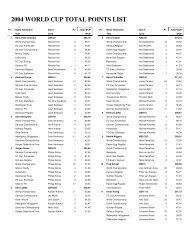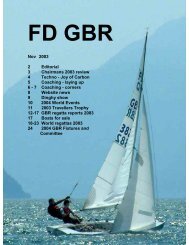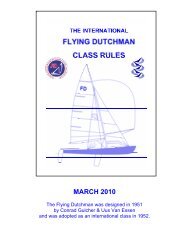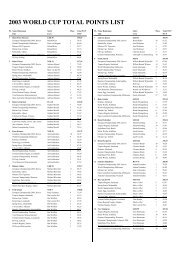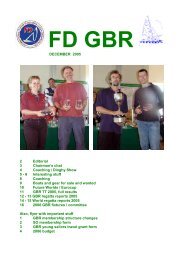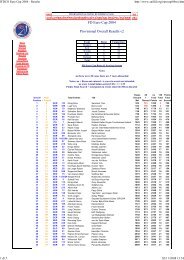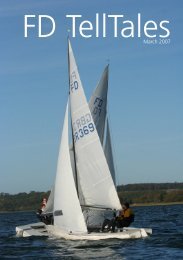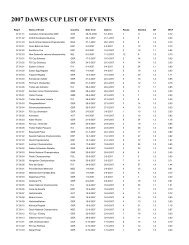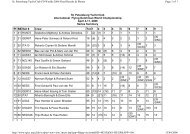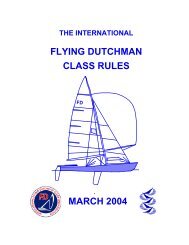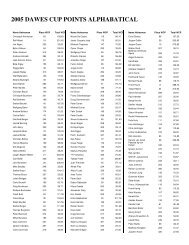A5 version - International Flying Dutchman Class
A5 version - International Flying Dutchman Class
A5 version - International Flying Dutchman Class
Create successful ePaper yourself
Turn your PDF publications into a flip-book with our unique Google optimized e-Paper software.
INTERNATIONAL FLYING DUTCHMAN CLASS RULES 2007 16<br />
angle that must not exceed a maximum of 105 degrees with the keel<br />
line. When racing boats with lifting rudder blades must fix the<br />
position of the leading edge as above by means of a pin, unless a<br />
special exception is made in the sailing instructions. The distance<br />
from the leading edge of the rudder, at the point of intersection with<br />
the extended keel line, must not exceed a maximum of 60 mm from<br />
the transom. (See diagram)<br />
51.4. A safety device must be fitted so that the rudder cannot come<br />
off unintentionally if the boat is inverted.<br />
51.5 Tiller The tiller may extend aft of the transom not more than a<br />
maximum of 1000 mm.<br />
51.6 Double rudders and rudders fully or partly forward of the plane<br />
of the transom are prohibited. Trim tabs, lifting foils or similar<br />
contrivances, attached to the rudder and/ or transom are prohibited.<br />
(numbers 52-56 are not used)<br />
57. Spars and Rigging. (See diagram)<br />
Mast. Rotating masts are prohibited. The Mast Spar Curvature<br />
shall be less than 20 mm.<br />
58. The weight of the mast (excluding trapeze hooks, shroud end<br />
fittings) must not be less than a minimum of 10.0 kg (which will<br />
become 9.5 kg in 2008). Mast corrector weights must be<br />
permanently attached to the mast.<br />
The weight of Carbon masts (excluding trapeze hooks, shroud end<br />
fittings) must not be less than a minimum of 9.5 kg. Until 1 March<br />
2008 carbon masts must carry a firmly attached corrector weight,<br />
which is clearly visible when sailing, either on the mast above the<br />
limit mark No 1, externally on the boom, or above the deck at the<br />
mast partners. Except for World and European championships, this<br />
requirement may be waived, if it is so stated in the NoR and SIs.<br />
The height of the centre of gravity of the mast must not be less than<br />
a minimum of 2500 mm above the top of Limit mark (band)<br />
number 1.<br />
Instruction: For the mast CG measurement the halyards must be in<br />
their sailing position. The shrouds, forestay and trapezes must be



